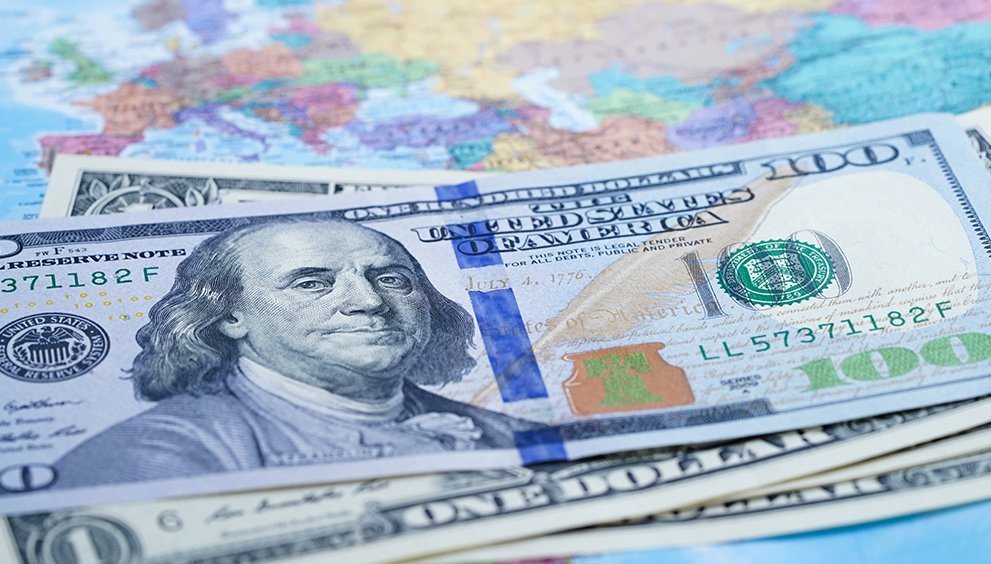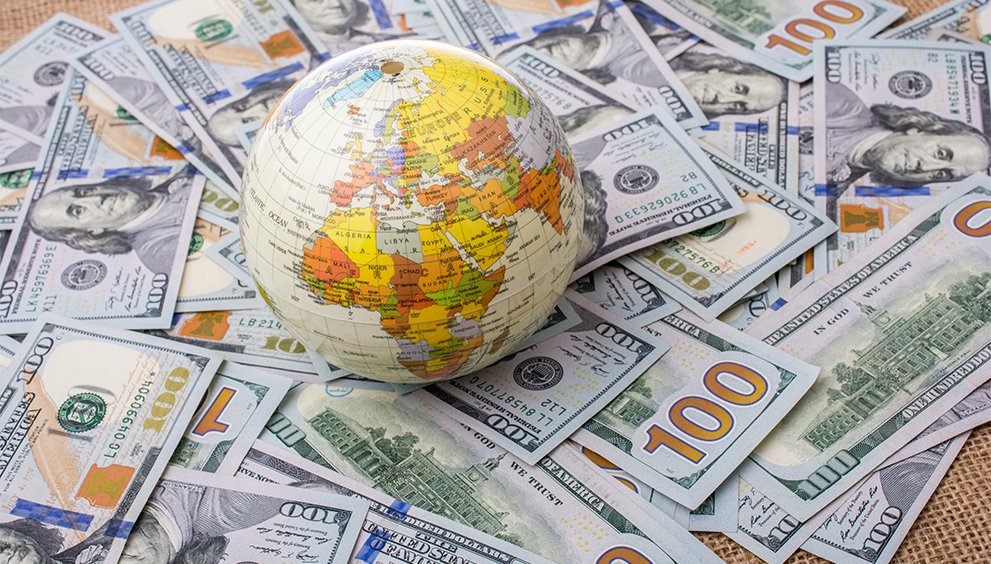The Role of the IMF in Stabilising Currencies: A Key Player in Global Economic Stability

Currency stability is a cornerstone of economic growth, financial confidence, and international trade. However, currency fluctuations, economic crises, and external shocks can create instability, leading to financial turmoil in individual countries and broader global markets. The International Monetary Fund (IMF) stabilises currencies, supports distressed economies, and ensures global economic stability.
This article explores the IMF’s role in currency stabilisation, its tools to maintain exchange rate stability, and the broader economic implications of its interventions.
What is the IMF?
The International Monetary Fund (IMF) is a global financial institution established in 1944 to promote international monetary cooperation, facilitate balanced trade, and support economic stability. With 190 member countries, the IMF provides financial assistance, policy advice, and technical support to countries facing economic challenges, particularly those experiencing currency volatility and balance of payments crises. The International Monetary Fund’s (IMF) core objectives encompass a range of crucial activities to foster global economic stability and cooperation. These objectives include:
- Maintaining Currency Stability: The IMF works diligently to ensure that the value of currencies remains stable, which is vital for international trade. By monitoring exchange rates and providing advice, the IMF helps prevent crises arising from abrupt currency-change fluctuations.
- Providing Financial Assistance: In times of economic distress, countries may face severe challenges that hinder their ability to function effectively. The IMF offers financial support and assistance to these nations, helping them stabilise their economies and restore growth. This support often comes with guidance on implementing necessary economic reforms.
- Monitoring Global Economic Trends: The IMF regularly conducts assessments of global economic conditions, scrutinising trends that could impact economies worldwide. By analysing data and economic indicators, the organisation advises policymakers on best practices to navigate complex economic landscapes.
- Facilitating International Trade: The IMF plays a pivotal role in promoting international trade, which is essential for the growth of global economies. By fostering a stable economic environment, the IMF helps prevent the spread of financial crises across borders, which can have debilitating effects on trade and investment.
- Preventing Financial Contagion: Financial contagion refers to how economic distress or financial instability spreads from one country to another. The IMF is committed to implementing measures that help mitigate this risk, thereby ensuring the resilience of the global economic system.
Why is Currency Stability Important?
Currency stability is essential for economic growth, investor confidence, and trade relationships. When a currency fluctuates wildly, it can lead to:
- Inflation and Rising Costs: When a country’s currency rapidly depreciates, the prices of imported goods tend to rise significantly. This is because a weaker currency requires more of that currency to purchase the same amount of foreign goods. Consequently, there is an inevitable increase in the overall price level of goods and services, leading to inflation. This scenario can erode consumers’ purchasing power and contribute to a decrease in overall economic stability.
- Capital Flight: A perception of currency instability can lead to capital flight, where investors choose to withdraw their funds from the affected country. This behaviour often stems from concerns about the potential devaluation of their investments. As investors take their money elsewhere, the economy faces further destabilisation, resulting in reduced access to capital for local businesses and increased challenges in fostering economic growth.
- Debt Repayment Challenges: Countries that carry significant amounts of foreign debt encounter severe difficulties when their domestic currency weakens. The depreciation of the currency increases the local currency cost of servicing that debt, making it more expensive and difficult for the government to meet its obligations. This situation can lead to a higher likelihood of default, thus negatively impacting the country’s credit rating and increasing borrowing costs in the future.
- Trade Disruptions: Currency exchange rate volatility creates uncertainty for both exporters and importers, as fluctuations can impact the pricing of goods in the international market. Exporters may find it challenging to price their goods competitively when the currency’s value is unstable, while importers may face rising costs that lead to a reduced capacity for importing essential goods. This instability can lead to decreased trade volume, ultimately affecting the country’s overall economic performance.
The IMF’s role in stabilisation helps mitigate these risks and ensures long-term economic stability.
How the IMF Stabilises Currencies
The IMF employs a range of monetary, financial, and policy interventions to stabilise economies. Some of the key tools include:
1. Lending and Financial Assistance:
When a country faces a currency crisis, such as rapid depreciation or depletion of foreign exchange reserves, the IMF provides emergency loans through different programs:
- Stand-By Arrangements (SBA): This financial support mechanism provides short-term assistance to countries experiencing unexpected economic shocks. It is designed to help stabilise economies during temporary financial difficulties by offering funds to manage the balance of payments and restore economic stability.
- Extended Fund Facility (EFF): This program is aimed at providing medium-term assistance to countries grappling with deeper structural challenges that impact their economies. The EFF allows for extended engagement with nations to address fundamental issues, promoting sustainable economic reform and growth over a longer duration.
- Flexible Credit Line (FCL): The FCL offers pre-approved funding to countries that demonstrate strong economic policies and frameworks. This facility is particularly beneficial for nations that encounter external shocks, offering them quick access to financial resources without the need for extended negotiations or program conditions, thereby stabilising their economies during turbulent times.
- Rapid Financing Instrument (RFI): The RFI is designed to provide immediate and flexible financial support in response to urgent crises, such as natural disasters or sudden economic downturns. This instrument allows countries to access funding quickly in times of need, enabling a swift and effective response to protect the economy and support recovery efforts.
Example:
During the Asian Financial Crisis (1997-1998), the IMF provided $40 billion in emergency loans to countries like South Korea, Thailand, and Indonesia to stabilise currencies and restore investor confidence.
2. Exchange Rate Monitoring and Policy Advice:
The IMF plays a proactive role in preventing currency instability by conducting economic surveillance of global financial trends.
- Annual Country Assessments: The IMF conducts annual evaluations of the exchange rate policies implemented by its member countries. These evaluations, known as Article IV Consultations, serve as a crucial mechanism for the IMF to assess each country’s economic situation and exchange rate regime. Through these consultations, the IMF engages in a comprehensive dialogue with national authorities, analysing their monetary policies and offering tailored recommendations aimed at fostering stable monetary conditions. By promoting sound economic policies, these assessments help ensure that member nations maintain a healthy economic environment conducive to growth and stability.
- Currency Manipulation Oversight: The IMF actively oversees the practices of its member nations concerning currency valuation. The organisation vigilantly monitors whether countries engage in practices that artificially devalue or overvalue their currencies to secure an unjust advantage in international trade. By identifying such manipulative practices, the IMF works to promote fair trade conditions and discourage any measures that might lead to economic imbalances.
Example:
The IMF has often intervened when countries devalue their currency to make their exports cheaper, such as in the case of the US-China trade tensions over the Chinese yuan (CNY).
3. Foreign Exchange Reserves and Liquidity Support:
The IMF helps countries boost their foreign currency reserves to defend their exchange rates against speculative attacks or economic shocks.
- Special Drawing Rights (SDRs): SDRs are an innovative international reserve asset created by the IMF to enhance the monetary resources of its member countries. SDRs provide liquidity to the global economy by supplementing a country’s official foreign exchange reserves. This resource helps nations manage their balance of payments and provides additional funding during times of economic distress. Countries can exchange SDRs among themselves or with the IMF for freely usable currencies, allowing flexibility in addressing short-term financial needs and contributing to financial stability worldwide.
- Emergency Liquidity Support: The IMF plays a critical role in maintaining global financial stability by providing Emergency Liquidity Support to member nations facing imminent financial crises. This mechanism allows the IMF to offer immediate financial assistance to prevent severe currency collapses and to stabilise economies during turbulent periods. By extending financial support, especially in situations of liquidity shortages, the IMF helps restore confidence in the financial systems of affected countries.
Example:
In 2021, the IMF allocated $650 billion in SDRs to help countries recover from the COVID-19 economic crisis, strengthen their foreign reserves, and stabilise exchange rates.
4. Structural Reforms and Economic Policy Recommendations:
Beyond financial assistance, the IMF requires countries to implement structural reforms to achieve long-term currency stability. These include:
- Fiscal discipline
- Monetary policy adjustments
- Trade liberalisation
- Debt restructuring
Example:
In Argentina (2018-2019), the IMF provided a $57 billion bailout but required the country to implement strict economic reforms to control inflation and restore exchange rate stability.
The IMF’s Impact on Currency Markets
The IMF’s policies and interventions directly and indirectly affect the foreign exchange (forex) markets, influencing currency values and market sentiment. Here’s how:
1. Market Confidence Boost
When the IMF intervenes, whether by providing loans, offering financial advice, or monitoring a country’s economic health, it boosts investor confidence in the country’s economy, this is crucial because investors are more likely to invest in a country if they believe that its economy is stable and that any currency risk is being actively managed. Increased investor confidence typically strengthens the local currency as capital inflows rise.
Example:
- Turkey (2019-2020): During a period of financial instability, the IMF-backed policy changes helped stabilise Turkey’s currency, the lira (TRY), by restoring investor confidence. The IMF’s involvement and the resulting policy adjustments helped reduce inflationary pressures, which had been eroding the value of the lira.
2. Interest Rate Adjustments
The IMF often recommends interest rate changes or monetary policy adjustments as part of the reforms it proposes to countries facing economic instability. For example, when countries are struggling with inflation or currency depreciation, the IMF might suggest raising interest rates to attract foreign capital or prevent a currency from devaluing further. On the other hand, during a recession, the IMF may recommend cutting interest rates to stimulate economic activity.
Example:
- Argentina (2018-2019): The IMF recommended interest rate hikes to tackle the inflationary crisis and protect the value of the Argentine peso. These rate changes directly impacted the currency’s stability by attracting foreign investments, though the country still faced significant economic challenges.
3. Capital Flow Stabilisation
One of the IMF’s key roles is stabilising capital flows into and out of a country. During periods of economic instability, there can be massive outflows of capital (known as “capital flight”) as investors pull their money out of a country due to fears of a currency crisis. The IMF can stabilise these flows by providing emergency loans, offering a financial safety net, and advising on economic reforms, ensuring that the country has enough foreign reserves to maintain a stable exchange rate. This reduces volatility in the currency market and stabilises the country’s currency value.
Example:
- South Korea (1997-1998): During the Asian Financial Crisis, the IMF provided a $40 billion emergency loan to South Korea, which helped stabilise the Korean won. The financial aid reassured investors, halting capital flight and providing the government with the reserves needed to defend its currency.
Criticism and Challenges Facing the IMF
While the IMF plays a crucial role in stabilising currencies and supporting global economic stability, its methods and influence are often criticised. Here are some of the key challenges the IMF faces:
1. Harsh Austerity Measures
One of the most common criticisms of the IMF is the strict austerity measures that often accompany its financial assistance packages. In exchange for IMF loans, countries are typically required to implement austerity measures, such as cutting government spending, reducing social benefits, and raising taxes. While these measures are designed to bring economic stability, they often result in widespread social and economic hardship, particularly for the most vulnerable populations. These measures can also stifle economic growth in the short term, making recovery harder.
Example:
- Greece (2010-2015): During the eurozone debt crisis, Greece received a massive bailout from the IMF and the European Union, but it had to implement severe austerity measures. These included pension cuts, tax increases, and spending reductions. While the bailout helped stabilise Greece’s finances, the austerity measures led to widespread protests, economic hardship, and high unemployment, particularly in the public sector.
2. Unequal Influence of Major Economies
Another criticism of the IMF is the disproportionate influence that major economies, especially the United States, have over its decision-making processes. The IMF’s voting system is based on member countries’ financial contributions, meaning wealthier nations (such as the U.S.) hold more sway in shaping the institution’s policies. This unequal influence can lead to policies favouring the interests of developed economies over those of emerging or developing nations, often resulting in policies that don’t fully address the latter’s needs.
Example:
- US-China Trade Disputes: The IMF’s handling of the US-China trade tensions has sometimes been seen as biased towards the interests of the U.S., given the U.S.’s significant influence within the institution. Critics argue that this has led to policies undermining developing countries’ economic interests.
3. Debt Burdens
Countries that receive IMF loans often face significant debt burdens. Although the IMF provides financial support in times of crisis, nations often must implement economic reforms in exchange. If a country cannot meet the loan terms, it can fall into a cycle of borrowing to service existing debt, resulting in rising national debt. This can prevent countries from investing in essential services like healthcare, education, and infrastructure, hindering their long-term economic growth.
Example:
- Argentina (1998-2002): To stabilise its economy, Argentina entered into a series of loans with the IMF. However, the conditions attached to the loans were harsh, leading to a debt crisis. The country struggled to repay its debts and, as a result, experienced a massive economic collapse, which saw widespread poverty, unemployment, and social unrest.
Final Thoughts
The IMF plays a central role in stabilising economies, preventing financial crises, and ensuring global economic balance. Through financial assistance, policy guidance, and exchange rate monitoring, the IMF helps countries navigate currency volatility and maintain monetary stability. While IMF programs have been instrumental in preventing financial collapses, they also come with strict economic conditions that can be controversial. Despite its challenges, the IMF remains one of the most influential global institutions in ensuring exchange rate stability and financial resilience.
Key Takeaways:
- The IMF provides emergency loans and financial support to countries experiencing economic crises.
- It monitors global exchange rate policies and prevents unfair currency manipulation.
- The IMF’s policy advice influences monetary decisions, affecting inflation, interest rates, and capital flows.
- While IMF programs promote long-term stability, some countries face challenges due to strict loan conditions and austerity measures.
In an era of rising currency volatility, the IMF remains critical in maintaining financial stability across the global economy.


 English
English 




































































































